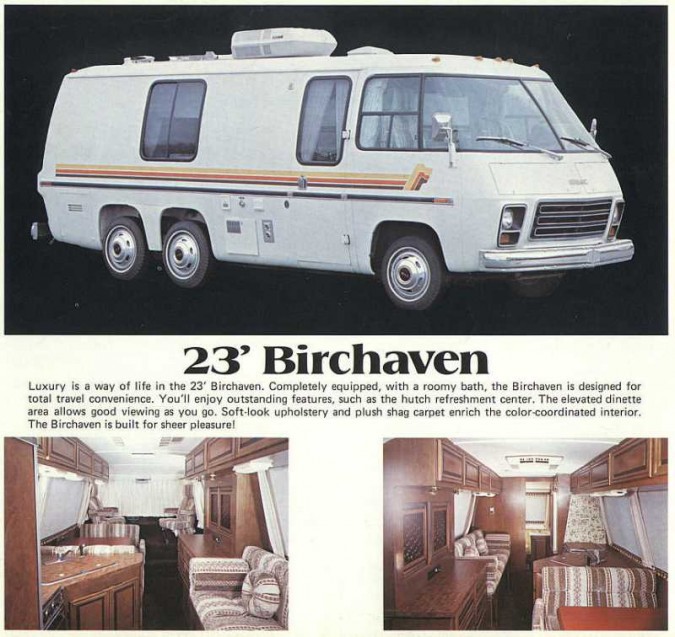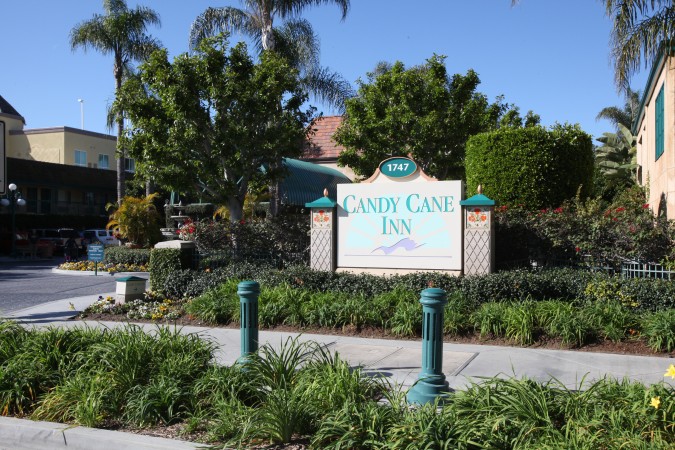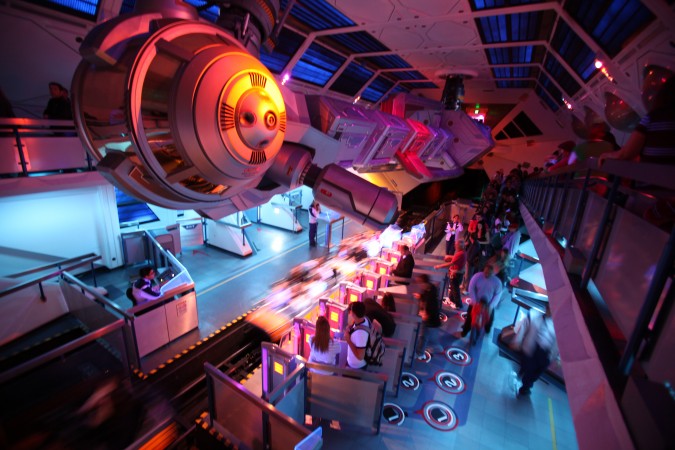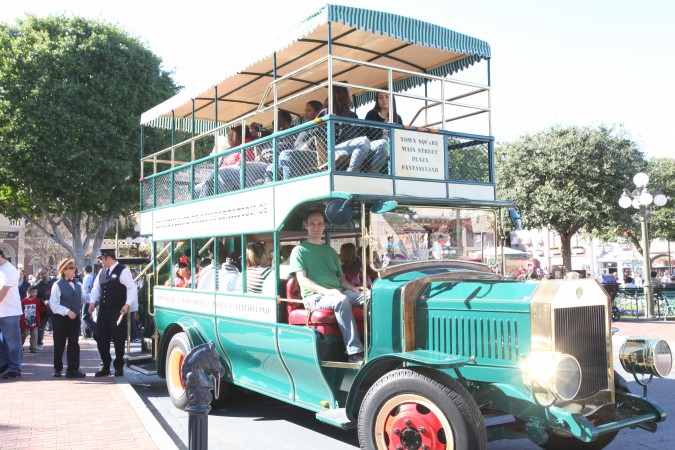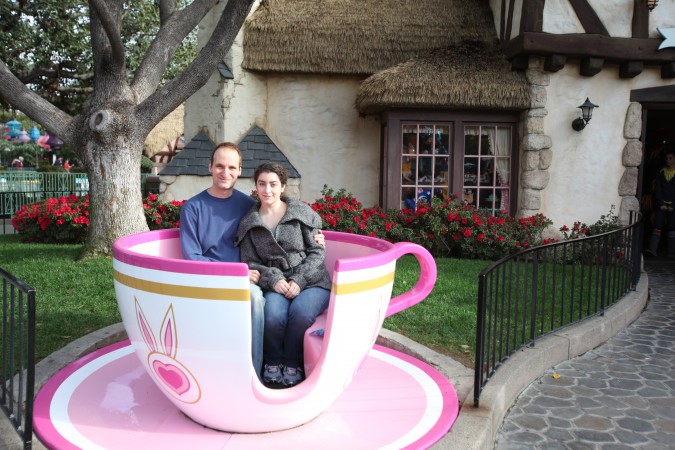Archive for the ‘Travel’ Category
Bus Conversions Magazine
I just wanted to give a plug to Bus Conversions Magazine. This is the magazine that got me hooked on this ridiculous yet fantastic hobby of converting a bus into a motorhome. I read their website daily, and I’ve learned a dramatic amount from the discussion forum the publisher hosts as a public service to subscribers and non-subscribers alike.
I’m sure they would like some more subscribers, as some of their readers had to group together to buy the magazine from the founder a while back to keep it afloat. The quality has gone way up under the new ownership. There used to be glaring typos throughout, but they have been mostly eliminated. I hope to become a columnist for this magazine one day, writing about my super green RTS conversion, now underway. I hope they will let me adapt my blog postings for print to get started!
I discovered the box in the upper right to subscribe to this blog has been broken for some time, so I don’t have as many subscribers as I otherwise would have. If you liked this post, and would like to subscribe, please type in your email address in the little box in the upper right. I won’t write useless nonsense to you, I promise. Thank you.
Kevin Warnock’s Plan To Efficiently Air Condition a Bus Conversion
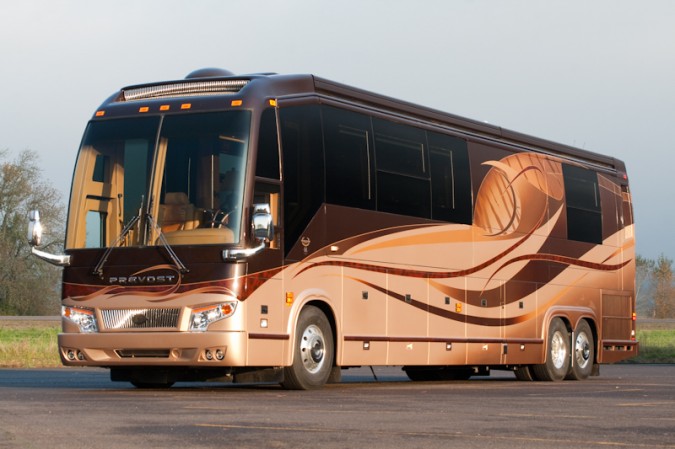
Marathon Coach bus conversion. This is not Kevin's conversion, but a finished professional conversion that costs over USD $1,000,000.00. This is to give you a rough idea what the plan is, though Kevin's will be much less fancy but more more green. It will also cost much, much less to own, complete and operate.
I’ve touched on my bus conversion project before. Today I will start writing about it in more detail.
The bus is a 1994 TMC 80206 “RTS”. The engine is a Detroit Diesel Series 50 rated at 275 horsepower. There are but 4 cylinders, down from 6 or 8 in most large buses. Fewer cylinders often mean better milage, just like with cars. This bus gets 11 miles per gallon on the freeway, which is outstanding for a vehicle that weighs so much and pushes so much air out of the way.
When I bought the bus in 2007, my plan was to do a quick conversion to a motorhome and then go on a six month tour of the United States with my girlfriend at the time. She hadn’t yet graduated from university, so there was time to finish a rudimentary conversion. She wanted to take a break after graduation and before starting her career, but sadly, she got offered a great job at Stanford University that she had to accept, since it came through a family introduction. She was most unhappy about not getting to take a break, and I was too, as she never had another break from full time work, and now we’re no longer together. That we never got to take the bus out for even one night really breaks my heart.
Life goes on, and there will be new girlfriends and I hope, another marriage, and, I hope, children.
My enthusiasm for the bus is still strong, and I will finish the project and use the conversion. I’ve invested too much to just sell off the partially finished project, and I would get next to nothing if I sold it today anyway.
Since this is a blog post and not a book, I will focus on just a small part of the project today, the air conditioning system.
Most bus conversions handle air conditioning while parked by installing a large diesel generator, in the 5,000 to 15,000 watt range, and use the power to run 2, 3, 4 or even 5 powerful yet not efficient air conditioners at once, to cool the entire interior simultaneously. Owners that live in hot regions have to run the generator and the air conditioners 24 hours a day for the duration of their travels, it can be that hot out. When I drove my first bus conversion across the United States from California to New York in 2002, I typically ran my 6,500 watt generator from morning until bedtime, which cost me about $20 a day in gasoline, and gas was much cheaper back then. It would simply not be cost effective to build a new conversion that uses so much fuel just to stay cool inside. So I have in mind something better, which I will write about here.
I have in mind covering about more than half the roof with 10 250 watt photovoltaic solar panels. These will cost about USD $7,000. In full sun, they will output 1,250 watts of power at 24 volts DC. Run through my Trace SW 4024 inverter, this is enough to power a 9,000 BTU mini-split air conditioner with a 20 SEER rating. This means the AC will draw about 450 watts of power at 120 volts.
9,000 BTU of cooling is not enough to cool a 40 foot bus conversion all at once, especially one with a full set of original side windows like mine has. The way I will handle this is to break up the inside into smaller zones. Right now there are three zones, the driver compartment, the living room and the bedroom. Eventually there will be one more zone, the guest bedroom, for 4 altogether.
I don’t need to occupy all the rooms at once, and I hate the noise that air conditioners make, so I have a plan to distribute the cool air from the one air conditioner to where it’s needed.
The plan borrows from the commercial air conditioning world, where cold water is used to cool rooms, as opposed to cold refrigerant, as is used in residential room air conditioners.
I plan to modify the inside portion of the mini-split air conditioner so that I submerse the evaporator plate, the part that gets freezing cold, in a large tank of water. This will cool that tank of water over time to about 35 degrees F. Then, I will use this cool water to pump through a distribution system of pipes in the ceiling of the bus to ‘heat exchangers’ in each room, or zone. Since cool air falls, these heat exchangers will be in the ceiling as well. Think of them as mini car radiators. Hot air in the room will pass over the cold fins and be cooled. The cool air will circulate down into the zone since cool air falls. The water inside the heat exchanger will pick up heat from the surrounding air. This heat will be carried back to the large water tank to be re-cooled by the mini-split evaporator that’s immersed in the tank. The mini-split will capture the heat from the water and send it outside the bus to the condensor part of the mini-split, which will be fan cooled on the exterior roof of the conversion.
The beauty of the above system, if it works, is that there won’t be any noisy fans inside the rooms. The inside part of the mini-split will probably be silent since the fan isn’t needed to push warm air over the evaporator. There may be a small noise made by the circulation water pump, but I suspect that it won’t be audible.
The heat exchangers should also be silent. It may turn out I will need a small fan near them to optimize their performance, but a quiet computer muffin fan or two should be sufficient.
Since the zones are fed by cold water in PEX plastic pipe, it should be easy to change which zone is being cooled by flipping regular water valves. No special certification is needed to install water piping, but installing copper tubing for AC refrigerant is not easy.
The final benefit of my proposed system is the sun can be used to cool the water tank during the day, but then the coldness of the tank can be ‘harvested’ at night to keep the sleeping zone cool throughout the night, without running a noisy and fossel fuel dependent generator. When I drove across the country in 2002, I hated to run the generator all night long, as even with ear plugs I could barely fall asleep it was so noisy.
When I add the 4th zone, the master bedroom will be tiny, at about 50 square feet by 4 feet high, or 200 cubic feet. I will have removable 3 inch thick insulating window panels I can press into the window openings to really insulate the compartment. The bedroom door will be weather stripped and insulated, perhaps itself 3″ thick. This will mean that the water tank is not trying to cool a particularly large area. With a 24 volt celiing fan circulating air over a heat exchanger, I think I will have found an essentially silent and free nighttime air conditioner for touring the world in hot weather.
I would love to use ceiling fans in the other zones, but sadly there is not enough ceiling height except over the bed to install a full size ceiling fan.
I can’t take credit for the idea above to dismantle an air conditioner and submerse the evaporator plate in a tank of water. This is routinely done by indoor gardeners trying to use liquid cooling to cool powerful grow lights. They take apart a $100 window air conditioners and bend the copper piping to the evaporator plate to dangle it in a tank of water. Once this water is cooled, it’s piped into the grow light fixtures themselves, which often draw a lot of power and so get very hot. The hot water from the fixtures is piped back to the water tank, where the window air conditioner again cools the water for the next cycle. i found videos online demonstrating the technique. I won’t link to them since these indoor growers appear to be growing illicit crops, which I frown on and have nothing to do with. But I do admire the ingenuity of the growers, and I thank them for helping me formulate my above plans.
While doing my research on this system, I found a venture backed company doing something similar to what I propose, but for commercial installations. They use relatively cheaper grid electricity during the night to freeze a multi hundred gallon tank of water, and during the hot day they melt that block of ice to cool the building. This is clever because grid electricity rates are much lower at night, when the grid is relatively lightly loaded. The company has products installed, and it looks good. I don’t plan to go all the way to ice because that would require something other than a cheap mini-split air conditioner, and I want to keep this system cheap and built from off the shelf commodity parts so it can be repaired anywhere should it malfunction. Also, mini-split air conditioners are available in very high efficiency models, such as 20 SEER. This is an astonishingly high number compared to the non-regulated rooftop RV air conditioners most bus conversions use, which can be around 10 SEER. Going from 10 to 20 in SEER cuts the power used in half, which is a really big deal when you have limited roof space for solar panels, and the panels cost a fortune for enough of them to run even one moderate sized air conditioner.
During the day, I would just cool the living room, of course. I have sliding shades on the windows, and silver reflective mirror on the outside of the glass, which cuts dramatically the heat infiltration through the windows. I also plan to make some 3″ thick removable panels I can press into the window opening to really insulate the windows I don’t need to be transparent. I suspect it would be much more energy efficient in fact to block all 6 windows in the living room and turn on my compact flourescent lights during the day, rather than to leave one or more windows unblocked. The living room is separate from the driver’s compartment, which is full of air leaks due to the transit bus front door, which can’t effectively be sealed. The door between the living room and the driver’s compartment will be insulated and weather stripped. I’ve often wondered why doors are so thin. The walls are often six inches thick but the doors are 1 3/4″ thick. Why not make the doors also 6 inches thick, filled with high density closed cell foam, similar to a SIP panel for house construction? This would require a new type of door knob and lock, but that is an opportunity to sell more expensive hinges and door hardware. I think thick doors should be required by code for all construction, residential and commercial, interior and exterior. Thick interior doors would cut sound transmission and make it easier to implement zones in buildings. The current practice of heating an entire home when the occupants are often in just one room needs to cease. Each room should be insulated from the others, and there should be a way to temper each room individually. How about the idea of having a switch similar to a light switch in each room? To be effective, each room will probably need two parallel systems – one quick reacting and one slow reacting but more efficient over the long time. I have such a system in my bedroom in my house. I have a 400 watt panel heater that contains no fan and thus takes hours to warm up the room. I also have a forced air wall heater that can heat up the room in a few minutes. When I enter the room and it’s freezing, I turn on both heaters, and then turn off the forced air heater after a few minutes. Then the slower acting convection panel heater takes over maintaining the temperature indefinitely. What could work perhaps would be hydronic floor water heating plus a forced air unit for rapid heating. It might even be that both heating systems could be hot water based, with a large heat exchanger mated with a powerful fan for rapid heating, and in floor piping for maintenance heating. I’m quite serious about this scenario, and I can see it being the dominant style of heating worldwide 100 years from now, with the water heated exclusively by solar hot water heating panels.
I can’t promise all my bus conversion posts will be this long, as this took some real effort to write. Please write me a comment if you like or dislike it. I would love to get a discussion going in the comments about the pros and cons of my ideas presented here.
I discovered the box in the upper right to subscribe to this blog has been broken for some time, so I don’t have as many subscribers as I otherwise would have. If you liked this post, and would like to subscribe, please type in your email address in the little box in the upper right. I won’t write useless nonsense to you, I promise. Thank you.
Disneyland Resort’s World of Color water display in California
My wife loves Disneyland Resort. I think we’ve been there eight times in the last five years. By contrast, before I met her I went to Disneyland perhaps once every five years.
I posted Disneyland news earlier this year. What’s new since then is a new water display show Disneyland calls World of Color.
When I hear ‘World of Color’ I think of World of Good, the fair trade social impact company started by my friends Priya Haji, Siddharth Sanghvi and David Guendelman, now part of EBay and Charity USA. I was the first outside investor in World of Good, so it’s near to my heart.
What Disneyland has put together with World of Color is simply the most impressive water display I’ve ever seen. It is more impressive than the fountains in front of the Bellagio Hotel in Las Vegas, Nevada.
I brought my Canon 5D Mark II to the show and shot video of the entire show. My camera got soaked by the water spray, and the lens got so wet at times the video is a bit degraded. But the overall result is good, and it’s probably one of the better videos out there since the Canon can shoot very wide angle since I used a 16-35mm zoom lens for this video. There are lots of Disney movie references in the show, most that I didn’t get since I’ve seen so few Disney movies.
My secret hobby of converting a bus to a motorhome
I have a hobby that I’ve been shy about disclosing. But, I have come to regard this hobby as vital research for a venture I would love to start, low cost housing built from ocean shipping containers. Such housing is available in Europe and many other parts of the world, but it’s rare in the United States.
My ‘secret hobby’ is converting commercial buses to self-contained residential dwellings on wheels, commonly referred to as bus conversions.
The link between bus conversions and shipping container homes is that both domiciles are long narrow boxes made of metal. A bus conversion is the more demanding housing type, because on a bus, one has to install all the utilities that a fixed dwelling can outsource to the city or town. So if I can build a bus conversion, I can build shipping container housing. This turns my interest in buses into legitimate research.
When I was a kid, I dreamed about camping in a motor home or trailer. My parents didn’t care for this idea, and as a family, we only went camping in tents.
One of the first motor homes I remember was the Winnebago Brave. This model had a distinctive silhouette unique to this model.
The next motor home I remember was the GMC motorhome. Years ago, my grandmother Elsie Battaglia owned a beach front house in Seal Rock, Oregon. Her next door neighbor bought a brand new GMC motor home, and I fell in love with it. I recall the price of $30,000 vividly, because when grandma sold her house a few years later, she got $25,000 for it. So this motor home cost more than a beachfront house did. The GMC motor home was very expensive when new, and today, restored models from that time also cost about $30,000 and can sell for over three times that if in really fine condition. What I liked about the GMC was its curvy and unified look. It was as far from a rolling box as anything other than an Airstream trailer. The GMC also had three axles, which made it look very serious, like a Greyhound bus. Very few other motor homes had or have three axles, and I know of no other motor homes as small as the GMC that have three axles. Although the GMC seemed huge to me when I was a kid, today it would be classified as a small motor home, at just 23 to 26 feet long, depending on the version.
I have a bus conversion that I bought already converted. It’s a 1967 MC-5a model from Motor Coach Industries, currently the largest manufacturer of commercial highway busses in the United States. I bought my conversion in 2001 from John Ridly of Santa Rosa, California. My dream at that time was to drive to New York City over a period of months to really see the country first hand. In 2002 I made the trip. I made the significant mistake of traveling in July and August, when it was just too hot to be traveling in the particular conversion I had bought. But I still enjoyed the trip, and I’m glad I took it. Fuel was only about $1.75 a gallon then, thankfully.
I videotaped the entire drive from San Francisco to New York City using a video camera I mounted in the passenger window. I stopped hourly to replace the Mini DV tape in my camcorder. I brought a global positioning receiver with me, and I videotaped the screen showing my location at the start and end of each video tape. I did this so I could plot the trip on a map one day.
I mounted the camera on a shock mount that I made to smooth out the image. I plan to edit the 90 hours of footage into a 91 hour movie I will post on this blog. This is a big project, and I’ve never watched the 90 hours of tape yet, so please don’t hold your breath waiting for the movie to appear here. I kept the camera rolling every minute I was driving, with the thinking that the tape may be very boring now, but very interesting far in the future, where people could see all the funny stores, price signs and driving habits of the day.
I was drained of energy when I returned from my two and a half month cross-country journey. It was just so hot that I couldn’t sleep some nights, as I could not run the generator through the night because it was not sound proofed, and it was located under the bed in the back of the conversion. I also did not have a ceiling fan, which would have helped a lot. I put the bus into storage for a couple of years after I got home, and it was covered with green moss when I finally took it out of storage and re-registered and insured it. It took two days to scrub clean. I moved it out from under the tree I had parked under, and now it does not get moss on it when parked for long periods.
When I met Monika, the woman I would later marry, I hesitated for a couple of months before I told her about my bus. I told her when we were staying at her parent’s vacation cabin three hours east of the Bay Area. I told Monika I had a ‘vacation home’ as well, but that it was on wheels. Thankfully, she wasn’t freaked out, and she agreed to go on trips with me. We went to Monterey, California and Yosemite National Park in California, among other destinations.
Fuel prices rose, and I felt guilty about driving a 40+ year old bus that gets just 6.4 miles to the gallon. Old buses have two-stroke engines, which are dirtier than modern four-stroke engines found in all current trucks and buses outside of the military, which still uses two-stroke engines because they are supposed to be more dependable in wartime because they more frequently contain no electronic controls that could be damaged by electronic warfare.
I decided to upgrade to a modern four-stroke engine bus with modern emission controls, and will write about the choice I made in an upcoming blog post.
Disneyland Vacation
I just got back home from a weekend at Disneyland park in Anaheim, California. My wife Monika, her parents, her brother and her brother’s girlfriend were there too. This was my first time at Disneyland with Monika’s family. We stayed at the Candy Cane Inn, which is a five minute walk from the front gate of the park.
Monika and I have been to Disneyland before, just the two of us. We went there on our first vacation together in 2006, so it holds a special place in our hearts. I wasn’t a fan of Disneyland before I met Monika, but she has shown me its charms. In fact, Monika signed me up for an annual passport this trip, and I now have an ID card in my wallet with my picture on it, like a Costco card. Yikes.
I decided to bring my camera with me – not my point and shoot, but my good Canon 5D Mark II that shoots outstanding video. Here are a few of the videos I shot. The first one if of the “It’s a Small World” ride. Since this is a peaceful slow moving ride, I just kept the camera on for the entire ride. I used a wide angle lens, and the result was pretty good I thought.
This next video I shot on the large Carousel.
This next video is of a parade of sorts. It’s not really a parade, as the performers move into position and then perform an extended show. Then they move a block or so away and do the whole extended show again. I think there are three such shows in a row, and the sets of shows happen twice per day. The show is called Celebrate or something similar. It was entertaining. There is a segment where the performers are on stilts. Have a close look at the stilts, which have a large area of contact with the ground. They look much safer than traditional wooden stilts.
I got some good stills as well, including this one of the boarding area for the Space Mountain indoor roller coaster. This was a time exposure, since it’s dimly lit. Note how the roller coaster car is blurred as it was just coming to a stop when I took this.
I love buses, even Disneyland buses. I got to ride in the front seat right next to the driver, in the double decker Disneyland bus inside the park. This bus is just for fun, as it never goes faster than five miles per hour, so the lack of wind protection for the occupants upstairs is acceptable.
Of course I shot video of my ride on the Omnibus, which you can see below.
Here’s a nice shot of me with my wife Monika, in a pink tea cup.
I’m looking forward to my next trip to Disneyland, which surprises me.
San Francisco is beautiful
I am going to start posting video of San Francisco. When you live here it’s easy to overlook the beauty of the place. So I’m going to start taking my camera with me on routine errands to capture everyday life in the City.
This first video is taken in Yerba Buena Gardens, which is a block sized area that begins at 4th Street and Mission Streets. It’s right next to Moscone Center, the City’s largest convention center, and where Oracle World is going on starting tomorrow.
The website for Yerba Buena Gardens is yerbabuenagardens.com
One of the fun things to do at Yerba Buena Gardens is to ride the historic merry-go-round. This ride was saved from the famous old San Francisco amusement park called Playland at the Beach. It’s been restored so well you would think it’s almost new. I bought a ticket and took a ride just to make an interesting video. You can read about Playland at the Beach on wikipedia.
Finally, here’s a video of the waterfall close up. It’s a huge waterfall, half a city block long. This is just a section of it, and I don’t move around, so you can just admire the beauty and sound of the running water.
September 11, 2001

United flight 175 hits World Trade Center, September 11, 2001 (photo by Flickr user themachinestops)
I am writing this in my 1967 MCI 5a bus [conversion] in a campground at the Grand Canyon in Arizona. It was a beautiful day today, and I walked for several miles along the south rim.
A month ago, on September 11th [2001], terrorists hijacked four commercial jetliners. Two were flown into the twin largest towers of the World Trade Center in New York City. One plane hit the Pentagon in Washington, DC. The remaining plane crashed into a field in Pennsylvania. Thousands of people were killed, and the twin towers collapsed. These towers contained 10% of the office space in Manhattan, and were 110 stories each.
These disasters are gripping the world, and the USA has been bombing Afganistan, which the US believes is sheltering Osama bin Laden, the prime suspect.
I did not know anybody who was killed in the attacks.
I decided to visit the Grand Canyon after attending the Bus Conversion Magazine annual convention in Laughlin, Nevada. The Grand Canyon is only a four hour drive from Laughlin, so I decided to visit. I don’t recall being here as a child.
The visibility today was 8 on a scale of 10, according to a ranger I spoke with. I shot some video and took pictures.
I am less lonely on this trip. It helps to be in touch with my cell phone.
I sold almost all of my remaining GoAmerica stock yesterday, retaining just ten shares, as souvenirs.
[This post is from my handwritten journal, October 10, 2001. I posted it to this blog and added the bracketed language on August 13, 2011.]
Burglar alarm sounds at our house in Amsterdam causing dream of bumble bee

Bumble bee by Flickr user Pavan Kunder, photo taken August 24, 2011. Posted via Creative Commons commercial license.
[This entry is from my 1976 handwritten diary. On October 26, 2012 I posted this to my blog and I added the bracketed language, including this comment, and also the photograph, which is recent, not from the 1970s. Thank you to Flickr user Pavan Kunder for permission under a Creative Commons license to use the picture. I was in 7th grade when I wrote this journal entry. I typed this post as I wrote it, including the mistakes, so you can see how I wrote back then. Keep in mind this is my private diary, and I’m sure I could have written with fewer errors had I known I would be showing it to the world years later. On March 30, 1976 my family moved from Chicago, Illinois, USA to Amsterdam, Netherlands for about four months. I wrote in my diary frequently during that time, and I plan to post all the entries to this blog. To my knowledge, we did not have an English dictionary with us in Amsterdam.]
I went to school again as usuall. I wrote a letter to My class in chicago. it was a little more than 1 page. I hope they like it. I told all about the boys, the house, everything.
One 2 more days of school till we get out for a 10 day vacation. I am going to ask mom about painting some eggs for easter.
I took my math book to school and did a few exercizes.
Last night the burglar alarm to our house went of, Andy thought it was a bumble bee in his dream.
The people tried to turn it off with the key but it didn’t work I guess it finally just went off. They didn’t even call the police when it happened!
My first story may be published in the newspaper at my school
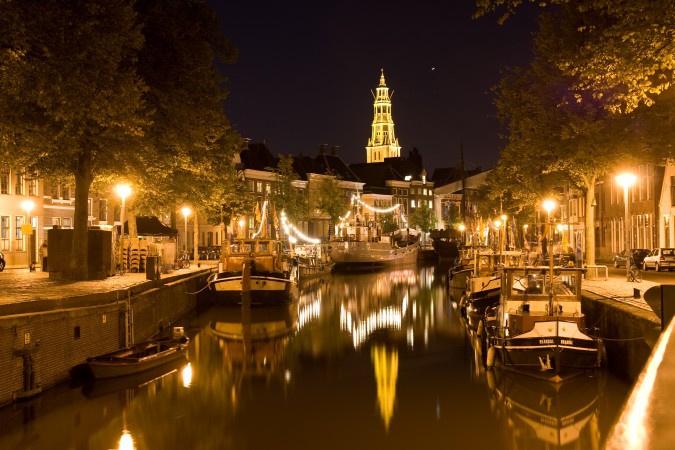
Night scene in Essen, Groningen, The Netherlands by Flickr user Bert Kaufmann, August 16, 2009. Published under a Creative Commons license that permits commercial use.
[This entry is from my 1976 handwritten diary. On October 26, 2012 I posted this to my blog and I added the bracketed language, including this comment, and also the photograph, which is recent, not from the 1970s. Thank you to Flickr user Bert Kaufmann for permission via a Creative Commons license to use the picture. I was in 7th grade when I wrote this journal entry. I typed this post as I wrote it, including the mistakes, so you can see how I wrote back then. Keep in mind this is my private diary, and I’m sure I could have written with fewer errors had I known I would be showing it to the world years later. On March 30, 1976 my family moved from Chicago, Illinois, USA to Amsterdam, Netherlands for about four months. I wrote in my diary frequently during that time, and I plan to post all the entries to this blog. To my knowledge, we did not have an English dictionary with us in Amsterdam.]
Today [Monday] was sort of a boring day nothing exciting happened. I went to school. One sort of exciting thing happened at school. I wrote a paper about the 2 boys [that were part of the Dutch family my family and I lived with during our stay in Amsterdam], I showed it to the teacher and he made me copy it over to put it in the school newspaper
I forgot to say yesterday was palm sunday. but we didn’t go to church or anything.
I finished the book the ‘baterdays’ that have have been reading, it was good.
One sort of stupid thing I did today was say that I miss my clarinet, I even cried.
Dad went to groninhen today.
Visit to Delft, The Netherlands

Delft, The Netherlands, date unknown. Photo by Flickr user Matthew Kenwrick, published here via a Creative Commons License that permits commercial use.
[This entry is from my 1976 handwritten diary. On October 26, 2012 I posted this to my blog and I added this bracketed language and also the photograph, which is recent, not from the 1970s. Thank you to Flickr user Matthew Kenwrick for permission via a Creative Commons license to use the picture. I was in 7th grade when I wrote this journal entry. I typed this post as I wrote it, including the mistakes, so you can see how I wrote back then. Keep in mind this is my private diary, and I’m sure I could have written with fewer errors had I known I would be showing it to the world years later. On March 30, 1976 my family moved from Chicago, Illinois, USA to Amsterdam, Netherlands for about four months. I wrote in my diary frequently during that time, and I plan to post all the entries to this blog. To my knowledge, we did not have an English dictionary with us in Amsterdam.]
We spent most of the day in delft, Aprox 8 hours. It was fun. We saw 2 churches, I took pictures of both. We saw a thing that was sort of a fort. It had gun holes, a moat and draw bridge, the works. We looked at lots of Delft potery Andy and I both bought a small Delft plack that had a windmel on each.
We took a trian there, It cost 48 guilders for round trip. Each way it took about half an hour. It seems sort of expensive to me.
Mom hates me for talking about money all the time, so she would like me to stop. She will give me 100 guilders if I do I’ll think $37.00 I’ll try it.


